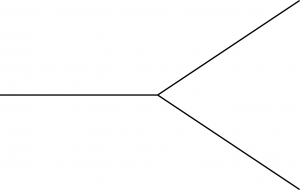Origins of Biological Complexity
Carl Zimmer has a great article in Quanta about the origins of biological complexity. Quanta, in case you’re wondering, is the new name for the Simons Foundation’s online science magazine, which is certainly going to be a go-to resource for reliable science stories much of the media would consider to be too subtle or insufficiently newsworthy.
Defining “complexity” is a notoriously tricky business, although we tend to think we know it when we see it. The quest for the One True Definition is a red herring, as what’s interesting is to see what patterns and laws we can associate with different kinds of complexity. In the biological realm, it seems natural to give at least some credit for the development of complexity to the pressures of natural selection. Having more highly-developed sensory apparatus or higher intelligence naturally goes along with greater complexity (or so we tend to think), and there can be obvious evolutionary advantages to these traits.
Carl looks at a new paper by Leonore Fleming and Daniel McShea that looks at the number of different part types, shapes, and colors in everyone’s favorite biological test subject, the Drosophila fruit fly. They argue that complexity increases even in the absence of any evolutionary pressure at all. That’s consistent with a proposal called the “Zero-Force Evolutionary Law,” which says that complexity and diversity simply tend to increase naturally, apart from any nudges evolution might provide. Fleming and McShea looked at the evolution of Drosophila raised in comfortable laboratory environments, where they were provided with unlimited food and perfectly livable conditions, and compared them to wild fruit flies. They conclude that, indeed, the absence of pressures led to increased measures of complexity in the population. Roughly speaking, there was less reason for crazy mutations to die off, so the genome could go galloping freely through the fitness landscape.
Other biologists are skeptical of this way of looking at things. I think the basic point is that it’s easy to see how diversity will increase in the absence of evolutionary pressures, but much harder to useful complexity (like eyes and brains) would develop. To which I imagine the appropriate response is “it depends on the conditions.” If we imagine that offspring survive and reproduce equally well no matter what kinds of mutations they undergo, and there are truly unlimited resources, then I would predict that some descendants would have just as many usefully complex outcomes as they would in the presence of selection pressures. But that’s only because there would be a ginormous number of descendants, and most of them would be utterly unviable in the real world. The fraction of descendants with useful complex features in the selection-free world would doubtless be much lower than in a world with natural selection.
Evolution is able to make some wonderful things, but it really is a blind watchmaker. Mutations and sexual shuffling of genes happen, and then natural selection culls away the less successful outcomes. It doesn’t actually accelerate the production of useful outcomes. So complexity happens naturally (at least, starting from simple states in open systems very far from equilibrium), but evolution brings it into focus.
Origins of Biological Complexity Read More »
